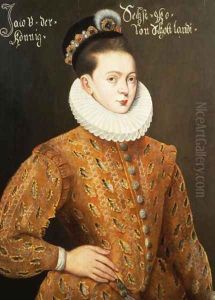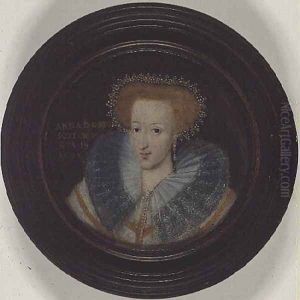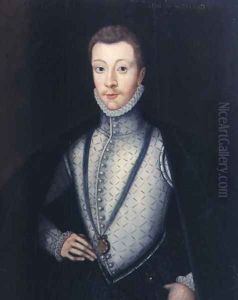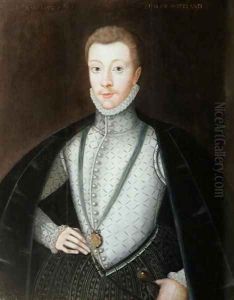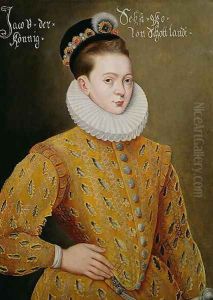Adrian Vanson Paintings
Adrian Vanson was a Dutch or Flemish painter known for his work as a portrait artist in Scotland during the late 16th century. Little is known about his early life, including the exact year and place of his birth, but he is believed to have been born around 1545. Vanson is thought to have been trained in the Low Countries, which encompass modern-day Belgium, the Netherlands, and Luxembourg, a region renowned for its artistic output during the Renaissance period.
By the 1570s, Vanson had moved to Scotland, where he became associated with the court of King James VI. In Scotland, he succeeded Arnold Bronckorst as the king's painter in 1584. This position was a prestigious one and involved creating portraits of the king and the nobility. Vanson's work reflects the Mannerist style, which was fashionable at the time, characterized by elegant compositions and an emphasis on courtly grace.
Vanson's portraits are noted for their detailed depiction of fabrics and jewels, capturing the opulence of the court attire. His works serve as valuable historical records of the individuals within the Scottish court and their social status. Through his portraits, historians and art historians can learn about the fashion and identities of the Scottish aristocracy in the late Renaissance.
It is believed that Adrian Vanson died around 1602, although the exact circumstances of his death are not documented. His work had a lasting impact on the tradition of portrait painting in Scotland and he is remembered as one of the key artists of the Scottish Renaissance. Vanson's legacy continued through his son-in-law, the painter Adam de Colone, who also became a prominent portraitist in Scotland.
